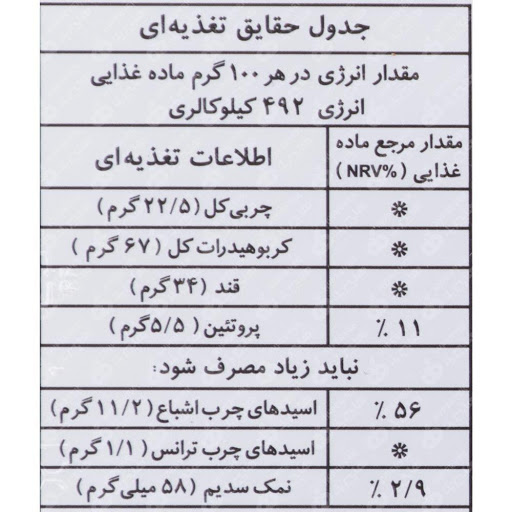
Food labels
The following facilitates the use of the Nutrition Facts label.
What information is on the food label?
• •Product Name
• •Brand
• Materials in it (listing in order from largest to smallest weight units)
• Nutritional information (such as moderate amounts of energy, fat, protein, sugars, and salt)
• Better usage date
• The details
• Weight
• Information for people with food allergies
• Food additives
• Instructions for use and storage
• Manufacturing Country
• Nutrition claims
You can use a label to compare the product with what is in similar packaged foods.
Energy: To lose weight, you should limit your intake of optional foods ( foods that contain more than 600 calories per serving).
Fat: Fat has more calories than any other nutrient, so you should limit your total intake.
Saturated fats: Saturated fats are associated with an increased risk of heart disease and high blood cholesterol.
Carbohydrates: Carbohydrates are available in all fruits and vegetables, bread, cereals, and sugar.
Sugar: Sugar is a type of carbohydrate. Limit foods that are high in added sugars.
Fiber: High-fiber foods such as whole-grain bread and cereals improve digestion.
Sodium: This shows the amount of salt. Consuming too much salt is associated with high blood pressure and can lead to heart disease, and stroke.
•total fat:
High: more than 17.5 grams of fat per 100 grams
Low: 3 grams of fat or less per 100 grams
•saturated fats:
High: more than 5 grams of saturated fat per 100 grams
Low: 1.5 grams of saturated fat or less per 100 grams
• Sugars:
High: more than 22.5 grams of total sugars per 100 grams
Low: 5 grams of total sugars or less per 100 grams
•Salt:
High: more than 1.5 grams of salt per 100 grams (or 0.6 grams of sodium)
Low: 0.3 grams of salt or less per 100 grams (or 0.1 grams of sodium)
1- Product share
:
First, look at the number of servings and the size of the servings on the nutrition facts label. It is not advice on how much to eat or drink.
2- Calories:
To achieve or maintain healthy body weight, balance the number of calories you eat and drink with the number of calories your body consumes. Consumption of 2000 calories a day is a general guide to nutrition recommendations. Calories are required to vary depending on age, sex, height, weight, and level of physical activity.
3- Nutrients:
It shows some of the main nutrients that affect your health.
• Nutrients to get less:
Saturated fats, sodium, and added sugars are the associated nutrients listed on the label adverse health effects.
• Nutrients to get more:
Diets rich in vitamin D, calcium, iron, and potassium can reduce the risk of osteoporosis, anemia, and high blood pressure.
This label may make some nutritional claims such as "gluten-free", "low fat", "low salt" or "high fiber".
Just because a product claims to be nutritious does not mean it is healthy. For example, a low-fat product may have more calories than another similar product.
Some nutrition labels use red, yellow, and green color-coding.
The green label, the healthier choice, the yellow one is neither too much nor too little, and the red means it is high in fat, saturated fat, and high salt.




